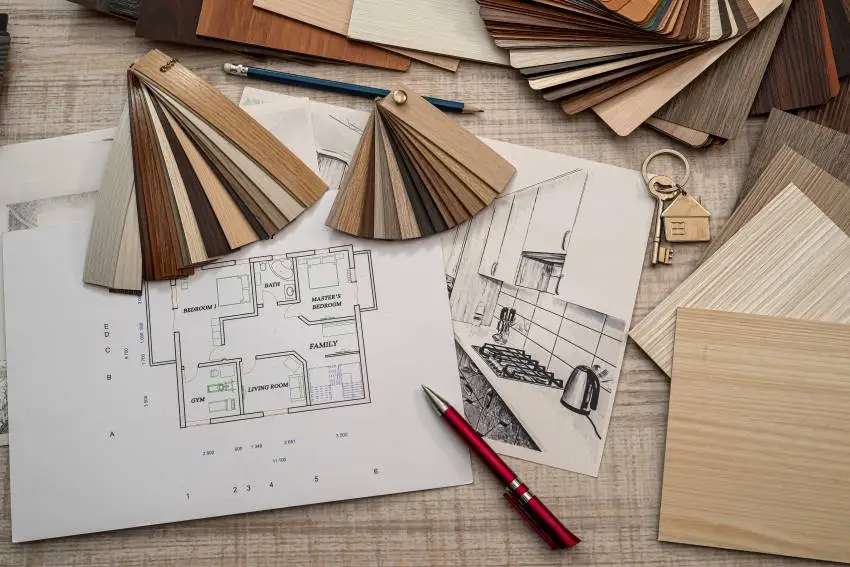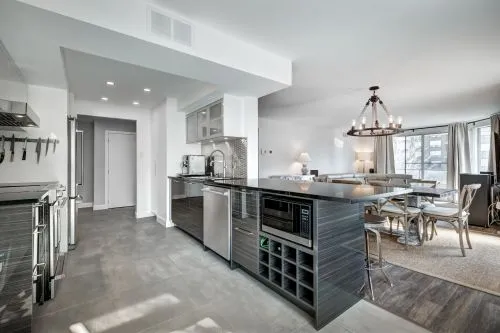10 Secrets Interior Designers Don’t Want You to Know About Remodeling!

Remodeling can feel overwhelming, especially with the countless decisions and options that come with it. But what if you had some insider secrets that could make the process smoother, more cost-effective, and ultimately, more successful? As a professional interior design expert, I'm here to share 10 remodeling secrets that designers often keep to themselves—tips that will help you save money, avoid mistakes, and get the most out of your remodel. By using these secrets, you can create a stunning space that feels uniquely yours, without all the stress.
1. Start with a Clear Vision
Before diving into your remodel, start with a clear vision. Designers know that having a solid plan upfront saves a lot of headache down the road.
Importance of a Mood Board
Creating a mood board is a powerful way to visualize your ideas and ensure cohesion throughout the space. Designers use mood boards to make decisions about colors, textures, and styles that all work harmoniously together. Whether you use a physical board or a digital tool like Pinterest, putting your ideas in one place helps keep you focused.
Avoiding Decision Fatigue
Remodeling involves a lot of choices, and without a clear vision, it’s easy to feel overwhelmed. By establishing your design direction early, you can avoid decision fatigue and make confident, cohesive choices as the project progresses.
2. The Power of Paint
Paint is one of the most transformative yet budget-friendly tools in a remodel.
Paint First
Always start with paint before buying new furniture or decor. A fresh coat of paint can completely redefine the space, setting the tone and creating the perfect backdrop for your new furnishings. Designers often use paint to create mood—from calm neutrals to bold accent colors.
Test Colors in Natural Light
One key secret is to test paint colors at different times of the day. Natural light can dramatically change how a color looks, and testing swatches on your walls helps you find the perfect shade that works both day and night.
3. Don’t Buy Everything at Once
The most beautiful homes evolve over time, and the same should apply to your remodel.
Layer Your Space Over Time
Designers often take their time finding the right pieces for a space. Layering items over time allows you to add personality and make choices that reflect your style, rather than buying everything at once and risking a cookie-cutter look.
Avoid Trends
Trends can be tempting, but they come and go. Instead of buying everything at once based on what’s currently popular, focus on pieces that truly speak to you. This approach not only prevents your space from looking dated but also ensures it reflects your personality.
4. Prioritize Lighting
Lighting is one of the most critical aspects of a successful remodel, yet it’s often overlooked.
Layered Lighting Approach
A well-lit space requires a combination of lighting types: ambient, task, and accent lighting. Ambient lighting sets the overall mood, task lighting is functional for activities like reading, and accent lighting highlights features and adds depth. Designers know that layering these elements creates a welcoming and dynamic atmosphere.
Dimmers Are Key
Installing dimmer switches is a designer’s secret to adjusting the mood of a room with ease. Whether you want a bright space for entertaining or a soft glow for relaxation, dimmers give you full control over your environment.
5. Mix High and Low Items

Not everything in your home needs to be high-end.
Splurge Strategically
Interior designers know when to splurge and when to save. Invest in key pieces like a high-quality sofa or a statement light fixture—items that will anchor the room and endure over time. For decor items like throw pillows or side tables, opt for budget-friendly finds that you can easily swap out.
Create Visual Interest
Mixing high-end pieces with more affordable finds adds depth and character to a room. This blend prevents your space from feeling too “perfect” and instead gives it a curated, layered look that’s full of personality.
6. Focus on Function Before Aesthetics
A beautiful room is nothing if it’s not functional.
Form Follows Function
The best designs prioritize how a space will be used. Before making aesthetic choices, consider the practical aspects of your remodel. Do you need more storage? How will the flow of the room affect daily activities? Addressing functionality first ensures your remodel is not only beautiful but also livable.
Consider Daily Habits
Think about how you use the space every day. For example, if you love cooking, invest in practical kitchen storage. If you have kids or pets, opt for durable fabrics. By aligning the design with your lifestyle, you create a space that works seamlessly for you.
7. Scale and Proportion Matter
One of the most common mistakes homeowners make is choosing furniture that doesn’t fit the space.
Use the Right Furniture Sizes
Designers are experts at selecting furniture that’s the right scale for the room. Oversized furniture can make a room feel cramped, while pieces that are too small can make it feel empty. Measure your space and choose furniture that fits comfortably, leaving room for pathways and balance.
The Rule of Thirds
The rule of thirds is a guideline that helps with the placement of artwork, furniture, and decor. By visually dividing a space into thirds, you can create a balanced and pleasing layout that feels naturally inviting.
8. Don’t Underestimate Storage
Clutter can quickly ruin even the most beautifully designed room.
Built-Ins Are Gold
Built-in storage solutions are a favorite of interior designers because they maximize space while keeping everything organized. Built-ins can be customized to fit your needs, whether it's bookshelves, cabinetry, or window seats with storage beneath.
Hidden Storage Ideas
Get creative with hidden storage solutions to maintain a clean look. Benches with built-in compartments, ottomans that open up, and coffee tables with hidden storage are great ways to keep your living space organized without sacrificing style.
9. Rugs and Curtains Can Make or Break a Room
Rugs and curtains are more than just accessories—they can anchor a space and create a sense of cohesion.
Rug Size Matters
The right rug size can make a room feel larger and more put together. Designers often choose rugs that are large enough for all the furniture to sit on, or at least for the front legs of larger pieces to rest on. This creates a unified look that anchors the space.
Hang Curtains High
Hanging curtains closer to the ceiling, rather than just above the window frame, can make your ceilings look taller and the room feel grander. Designers use this trick to give a space an elegant, airy feel.
10. Don’t Forget the Details
It’s often the little things that make the biggest difference.
Hardware and Trim
Swapping out cabinet hardware and updating trim is a quick way to give your space a polished look. Whether it’s matte black handles or brass knobs, these small touches can elevate the entire room.
Layer Textures
Incorporating a mix of textures—like velvet, linen, wood, and metal—adds depth and warmth to your space. Designers know that a room with layered textures feels more inviting and visually interesting.
Make Your Remodel Shine
These 10 secrets are what interior designers use to create stunning remodels that are both beautiful and functional. Take your time, plan thoughtfully, and embrace these insider tips to make your remodel truly shine. Remember, the key to a successful remodel is blending functionality with personal style, creating a space that you’ll love for years to come. If you’re ready to start your remodeling journey and want some expert guidance, don’t hesitate to reach out to a professional who can bring your vision to life. Your dream home is just a few small secrets away from becoming a reality!